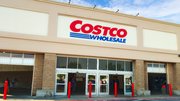Commentary
How smart retailers join social content, e-commerce for robust customer experience
Dave Feinleib, CEO, Content Analytics, explains how great product content no longer refers to just product descriptions and images. Great product content provides an immersive experience and connects the different places that consumers are spending time online.

October 4, 2018
By Dave Feinleib, CEO, Content Analytics
From the farmer's market to the mall, social and commerce have long been connected offline. Now, leading brands and retailers are combining the best of retail and social online to increase shopper engagement and drive higher conversion rates.
Social content
Earlier this year, Amazon made its basic A+ content free to all Vendor Central users. A+ content consists of rich media and social content, like lifestyle images and bulleted lists, embedded in the middle of product detail pages — the pages where shoppers make purchases.
Just a few months later, Walmart re-launched its flagship e-commerce site with the goal of making the shopping experience more immersive and engaging. The company has been working with Content Service Providers (CSPs) to build rich media and influencer content directly into its product pages. CSPs have direct integration with Walmart systems. This means they're able to host social content like images, videos and PDFs on the retailer's website on behalf of their brand clients.
As a result, brands are no longer limited to updating basic product imagery and descriptions. They can integrate a variety of media directly into the item pages where shoppers buy products.
PepsiCo, for example, has integrated social content into its product pages on Walmart.com for its leading brands like Bubly, Doritos and others. The content brings the product pages to life and helps shoppers connect with multiple brands in the Pepsi family. It appears on the product pages just below nutrition facts and other key product information.
The opportunities for creativity with the rich media/social content format are practically unlimited. Brands can display brand-created and user-generated videos, images and documents to enrich the shopping experience on Walmart.com.
That means that brands can present shoppers with real-life examples in video or image form of how consumers are using their products. And they can even integrate interactive, web-based tools that help shoppers make more informed product choices, such as for hair care and beauty products.
Social media Integration
Other retailers are taking things a step further by building social media feeds directly into their product pages. Target, for example, as part of its content best practices, recommends integrating content from Instagram into its product pages. This enables brands to bring together influencer content from social sites like Instagram and Pinterest with the product detail pages where consumers complete their purchases.
What does this convergence of social and e-commerce mean for brands? For years, brands have invested billions of dollars in television, print and online advertising. But as the worlds of e-commerce and social come together, brands need to invest equally aggressively in social content. Brands that don't take advantage of these new capabilities will lose out on a unique and compelling way to connect with shoppers looking to buy their products.
Redefining great product content
Great product content can take many forms. Getting the baseline content right — images, titles and product descriptions — is critical. It's often what helps shoppers discover a product in the first place. Without the right product title and relevant keywords in a product description, a product may not appear in online search results, making that product virtually invisible to online shoppers.
Once a shopper finds a product, however, conversion is the next key step. That's where social content can really help. Social content not only brings products to life, but also provides a substitute for the offline product experience. With more shoppers starting their purchase journey online, providing as rich a digital experience as possible is crucial to being part of a shopper's overall purchase decision.
Put all that together and it's clear that great product content no longer refers to just product descriptions and images. Great product content provides an immersive experience. It connects the different places that consumers are spending time online — from social sites like Instagram and Pinterest with e-commerce sites like Amazon, Target and Walmart. Leading brands recognize that as consumers migrate more of their purchase behavior online, delivering a robust, immersive content experience to shoppers is key.





